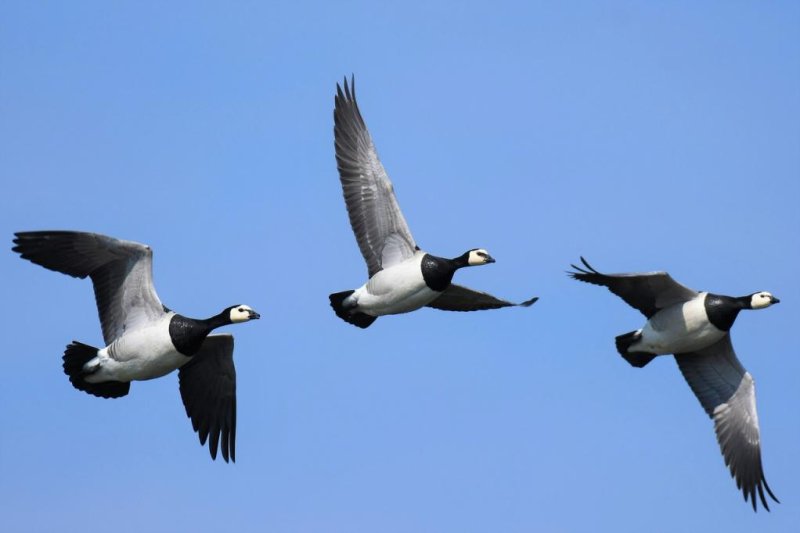Barnacle geese have altered their migration pattern in response to climate change. Photo by
Pixabay/CC
Sept. 3 (UPI) -- Geese have altered their migratory flight paths over the last 25 years, according to a new study.
Over the last 25 years, scientists have been tracking the movements of barnacle geese as they migrate from the British Isles to Svalbard, a Norwegian archipelago in the Arctic.
Until recently, the birds gathered at a "staging area" in Norway, just south of the Arctic Circle, before making the trek to their breeding grounds. But for the last 25 years, the geese have been staging in northern Norway, well inside the Arctic Circle.
Researchers published their findings this week in the journal Global Change Biology.
"It makes sense that the birds went even further North, because where snow used to be very common there at the time of their arrival in Norway, these days it is often freshly green there: the most nutritious stage," Thomas Oudman, a biologist at the University of St. Andrews, said in a news release.
Researchers were surprised to find that younger geese were more likely to have shifted their migratory pattern than older geese.
"The youngsters are responding to a trend they could not have experienced during their short life," Oudman said.
Scientists estimate that as a few geese began shifting their behavior in response to climate change, younger geese learned the behavior. Adult geese have also shifted their flight patterns northward, but researchers found that as geese get older, many revert back to their old migratory habits.
"These patterns point at a complex social system, which enables the geese to rapidly colonize newly available areas," said Oudman.
Unlike many species, which have been negatively affected by climate change, barnacle geese are thriving despite the habitat disruption. The species has been able to adapt thanks to an abundance of food and space in the Arctic.















